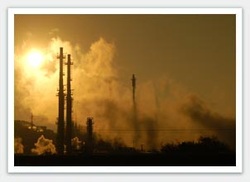 VOCs are everywhere: at homes, at dry cleaning units, at food processors, at petroleum refineries, at airports and automobile service stations, at electronics and chemical plants, at print and paint shops etc. VOCs are those chemicals that exposed to air volatilize readily. So, these compounds contribute to air pollution by their vapour and to water and soil pollution by that fraction which can be carried deep into the soil by rainwater and melting snow. VOC and the environment: VOCs are dangerous for humans, fauna and flora. Firstly, these compounds have been proved to cause a variety of adverse health effects (Minnesota Department of Health, 2003, Regional Environmental Assessments, 2002; U.S. EPA, 2003). Generally, allergic skin reaction, dizziness, headaches, eye and respiratory tract irritation, coughing, visual disorders, memory impairment, confusion, anemia and fatigue are some of the symptoms associated with short-term exposure. Kidney, liver, brain damage, cardiac sensitization reactions and also damage to the nervous, reproductive and immune systems are caused by long-term exposure. VOCs are also “endocrine impostors”. Some are also known or suspected of causing cancer. Also, the natural plant processes can be destroyed or interrupted by some organic volatile compounds. In the atmosphere these chemicals are transformed in other compounds even more dangerous for humans, fauna and flora. The ground level or “bad” ozone, a key ingredient of urban smog, is created by a chemical reaction between oxides of nitrogen (NOx) and volatile organic compounds in the presence of sunlight. Repeated exposure to ozone pollution may cause a variety of health problems (Clean Air Counts, 2003); ozone also reduces the growth rate of trees and agricultural production. VOCs participate in the greenhouse effect, acid rains and stratospheric or “good” ozone depletion, which are serious environmental problems (Avila et al., 1998). Consequently, VOCs are a great group of air pollutants and our duty is to eliminate them from being released. For this reason, firstly, we must know who are they and which are their sources. VOC and their sources: The USA Environmental Protection Agency (EPA) gave the following definition for VOCs – any compound of carbon, excluding carbon monoxide, carbon dioxide, carbonic acid, metallic carbides or carbonates, and ammonium carbonate, which participates in atmospheric photochemical reactions. This includes any organic compound other than the compounds that have been determined to have negligible photochemical reactivity (e.g. methane, ethane, methylene chloride…). According to this definition a wide variety of organic compounds, such as aliphatic, aromatic and chlorinated hydrocarbons, aldehydes, ketones, esters, organic acids and alcohols can be considered as VOC. Emissions of VOCs could appear from natural sources, but most VOCs emissions result from man-made sources. Approximately 235 millions tonnes of VOCs are released per year into the atmosphere from anthropogenic sources (Guenther et al., 1995) and that is because there are thousands of different VOCs produced and used in our daily lives. List of VOC products:Acetone Acetonitrile Acrylonitrile 3-Chloropropene (Allyl chloride) Benzene Benzyl chloride Bromodichloromethane Bromoethane (Ethyl bromide) Bromoform Bromomethane 1,3-Butadiene n-Butane Chlorobenzene Chloroethane Chloroform Chloromethane Carbon disulfide Carbon tetrachloride 2-Chlorotoluene Cyclohexane Dibromochloromethane 1,2-Dibromoethane 1,2-Dichlorobenzene 1,3-Dichlorobenzene 1,4-Dichlorobenzene Freon 12 (Dichlorodifluoromethane) 1,1-Dichloroethane 1,2-Dichloroethane 1,1-Dichloroethene 1,2-Dichloroethene (cis) 1,2-Dichloroethene (trans) 1,2-Dichloropropane 1,3-Dichloropropene (cis) 1,3-Dichloropropene (trans) Freon 114 (1,2-Dichlorotetrafluoroethane) 1,4-Dioxane Ethyl acetate Ethanol Ethylbenzene 4-Ethyltoluene n-Heptane Hexachloro-1,3-butadiene n-Hexane Isopropyl alcohol (2-Propanol) Isopropylbenzene (Cumene) Methylene chloride 2-Hexanone (MBK) 2-Butanone (MEK) 4-Methyl-2-pentanone (MIBK) Methyl methacrylate Methyl-tert-butyl ether (MTBE) Naphthalene Propylene Styrene Tertiary butyl alcohol (TBA) 1,1,2,2-Tetrachloroethane Tetrachloroethene Tetrahydrofuran Toluene 1,2,4-Trichlorobenzene 1,1,1-Trichloroethane 1,1,2-Trichloroethane Trichloroethene Freon 11 (Trichlorofluoromethane) Freon 113 (1,1,2-Trichloro-1,1,2-trifluoroethane) 1,2,4-Trimethylbenzene 1,3,5-Trimethylbenzene 2,2,4-Trimethylpentane (Isooctane) Vinyl acetate Bromoethene (Vinyl bromide) Vinyl chloride Xylene (para & meta) Xylene (ortho) How to solve VOC emissionsPlease find our Vapour Recovery and Odour Control technologies to see what we can do to solve VOC emissions. Vapour Processing System (VPS)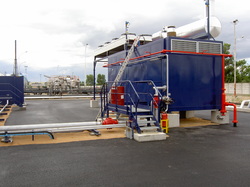 The Vapour Processing System (VPS) is designed to reduce the VOC emissions with 99,9%. At the same time the VPS contributes to the sustainable development of bulk-handling companies by reducing their electricity consumption. The VPS consists of a modified gas engine with a continuous dual fuel device and is controlled by a specially designed engine, generator and fuel management system. The VPS operates as a fully automatic device. As soon as any hazardous vapour is detected the system starts operating. (Working capacity as standalone unit with buffer up to 600 m3/h, with a combination of technologies up to 2000 m3/h) Refrigerated Vapour Recovery System (RVRS)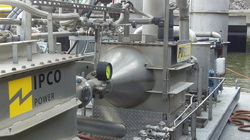 The Refrigerated Vapour Recovery System (RVRS) is a flexible solution to reduce the VOC emissions and is available in mobile and fixed version. The system recovers clean product from the vapours without reportable emissions. PURGIT RVRS uses a proprietary system that condenses and recovers tank vapours. Depending on the application PURGIT's condensers are capable to recover over 99% of the VOC. The RVRS is able to cool down the vapours to approximately -120˚C. (Working capacity for tank loading/discharging and degassing is between 100 m3/h and 4500 m3/h) ECOVOC Catalytic Oxidation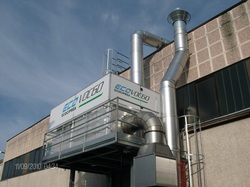 The ECOVOC Catalytic Oxidation System can reach high levels of auto-thermal processes and control the air pollution (99% VOC reduction), without exceptional operation costs. The ECOVOC uses highly specific catalysts for the oxidation of VOCs into CO2 and H2O. The temperature required for reaction is 350°C - 470°C. Because of the lower oxidation temperature the ECOVOC consumes approximately 70% less energy than a RTO with the same capacity. Normal oxidation systems (catalytic and thermal) have direct flame contact with the incoming vapours. The ECOVOC however uses a system with heat exchangers to pre-heat the vapours before entering the catalytic honeycomb structure. (Working capacity up to 6000 m3/h and modular expendable) Hier klikken om te bewerken.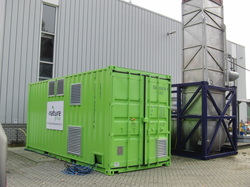 The Ecoscrub has a three stage washing facility. The polluted vapour is first led into a Cyclone for vapour dehumidification. Here a substantial amount of product is extracted in a oily/water solution. Subsequently the vapour is led through the HD unit where a first washing takes place and where the vapour is cooled down intensively. This provides a maximum reduction of volatile as well as odour pollution out of the vapour. In the scrubber column two sequential washing operations take place whereas in the last stage the vapour flows through a fiber demister curtain for final treatment. The result is a reduction of up to 80% on Volatile Organic Compounds and more than 90% reduction of odour emissions. (Working capacity mobile up to 3500 m3/h and the fixed can be designed to different capacities) Comments are closed.
|
Categories
All
Archives
March 2024
AuthorBart Sluimer is the General Manager of IPCO Power. IPCO Power is an international company specialized in environmental solutions for the petrochemical-, shipping- and power industry. Find us on google+ and twitter |
